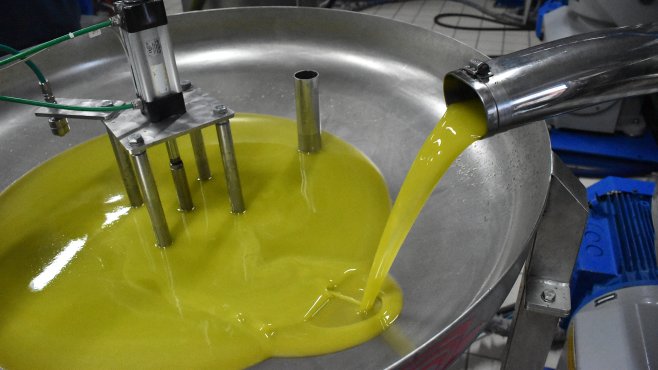Olive Oils
Italy is the second largest producer of olive oil after Spain, with 90% of the oil coming from the southern regions, although apart from Piedmont and Valle d'Aosta, olives are grown almost everywhere.
How can I identify quality olive oil?
- The best quality oils carry the extra virgin label and come from the first gentle cold pressing
- The best oils come from local, under-ripe olives harvested by hand and pressed in the immediate area within a few hours of harvest
- The quality of the oil is confirmed by the protected designation of origin DOP and IGP or organic certification
- Quality oil leaves the mouth dry and clean, without aftertaste or grease.
- The packaging itself can be another clue: it should be dark to protect the oil from the effects of sunlight and the label should contain all important information, including the origin of the olives
- The price is also a clue. Too low a price is always synonymous with low quality
Olive oils by quality:
Olio d'oliva extra vergine novello
Extra virgin olive oil of the highest quality. The highest quality olive oil without any treatment, which contains the most health benefits. Novello oil is produced only between November and January. This all-natural oil comes from the first harvest and the first pressing. It is obtained only by mechanical cold pressing and is not filtered, which is why it contains bits of pulp that give the oil its thick consistency and bright green colour. It has an incredibly fresh aroma and a typical taste. It is suitable for flavouring cold dishes and should ideally be used within a few months to retain all its properties.
Olio d'oliva extra vergine
Extra virgin olive oil of the highest quality. A completely natural oil from the first pressing. It is obtained only by mechanical cold pressing and then filtered. It contains a large number of health benefits such as vitamins, antioxidants and quality proteins. It has a characteristic olive aroma and a slightly bitter taste, the intensity of which depends on the variety used. It is suitable for use both cold and cooked.
Olio d'oliva vergine
Virgin olive oil of good quality. Natural oil from the second and third mechanical cold pressing. The quality of such oil is still at a decent level, but the taste and aroma are no longer very pronounced.
Olio d'oliva
Olive oil obtained by mixing natural olive oil and refined oil. A low-quality oil containing very little nutritional value.
Olio di sansa
Olive pomace oil. The worst possible quality of oil. It is obtained by using chemical solvents to 'extract' the oil from the olive residue, which has already been pressed several times and then refined. As a result, the oil loses its organoleptic properties and contains virtually no beneficial substances, but only low-quality fats.
Olive oils from different italian regions:
Liguria, Veneto, Lombardy
Oils from the north of Italy have a delicate aroma and a delicate sweet taste reminiscent of almonds and herbs, without pungent or bitter notes. They are excellent for flavouring delicate dishes such as fish, chicken stews, light salads or steamed vegetables.
Producer: Calvi
Toscana, Umbria, Abruzzo
Oils from the central Italian regions tend to be more aromatic, their aroma is reminiscent of freshly cut grass and their taste is quite pronounced, slightly bitter with hints of artichoke or green tomatoes with a slight tang. They are a perfect complement to more substantial dishes such as grilled meats, tartare, thicker salads or pasta alla Norma.
Producer: Ursini
Molise, Calabria, Puglia, Sicilia
Oils from the south of Italy are the most expressive, with an intense aroma and a distinct bitter taste with spicy notes. They are excellent with thick, strong-flavoured dishes such as steaks, legume soups or pasta e fagioli.
Producer: Fratepietro, Centonze
